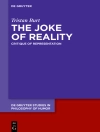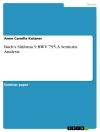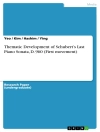The indigenous woman stares at her long red dress hanging from a telephone pole, struggles to free herself, and once freed, with her dress dangling, reduced to shreds and her underwear exposed, in silence, she reads the names of the missing women, who she had written on her arm. He ends by shouting the names one by one. This is the performance of an indigenous Canadian artist, who recounts, through this work, the commemoration of the lives of missing and murdered indigenous women, who disappeared from the streets of Vancouver in Canada. This happened during the Canadian winter of 2002 for those passing through the center east of the city. This may come as a surprise to distracted observers, but the reality is that in Canada, often ranked high on the list of global quality of life indices, indigenous women suffer high rates of violence. In 2014, the Canadian Police confirmed that 1017 indigenous women had been murdered and that 164 had disappeared since 1980, despite indigenous women making up 4.3% of the countrys female population. The Street of Tears, as the Native Americans call it, is infamous for women who disappear in its path. According to the Amerindians, Native Americans, the disappearances and killings, which began in 1980 and never ended, would be at least four thousand, an impressive number that does not stop. It is a massacre that for decades has been consumed in silence and indifference. Only in 2019, following pressure from many associations and complaints from native groups, was a report published on how many mysterious disappearances and murders occurred on Native American women. The country in which these tragedies are predominantly occurring, according to a survey, is Canada. Between 1980 and 2012, 1181 victims were recorded. Between 1980 and 2012, there were 1181 registered victims. If this number already seems extremely shocking, think about the total number of all the Native American women who disappeared and/or were killed. The exact number of victims will never be known, also because many families do not report the disappearance of these women, for fear of repercussions and further revenge and their murderers are: strangers, acquaintances or their husbands. Another piece that is added to this monstrous mosaic are the unsolved cases and many families, to whom a mother, a sister, a daughter has been taken, ask for the reopening of these cases to ensure that justice is done. Why all this reluctance to get to the bottom of this? It is a question that arises spontaneously, but above all it arouses a lot of anger, as if there were serial murders A and B. Hasty and superficial investigations, racist prejudices, are some of the elements found in the investigation, The Commission has also discovered that the violence against these women is due to the inaction of the State, but above all to the associated ideologies that are based on an alleged superiority.
关于作者
Patrizia Luraschi was born in Como on 19 December 1957. Graduated from the Paolo Carcano Technical Institute in Como, as a Textile Design Expert for Fabrics. She is an ebook writer who deals with different topics, from current affairs to fashion and other much more serious topics. She really likes to wander through the news of the past and today, to investigate special cases, but above all she loves the arts and beauty, even from the images of her books you can see the desire for color and simplicity. This passion for writing has always been in her fingers; in fact, she too at school was particularly successful in the required subjects; then, this passion has then poured it into the writings of her ebooks. She has also dealt with music in the past years and hence the desire for art and to wander in it.












